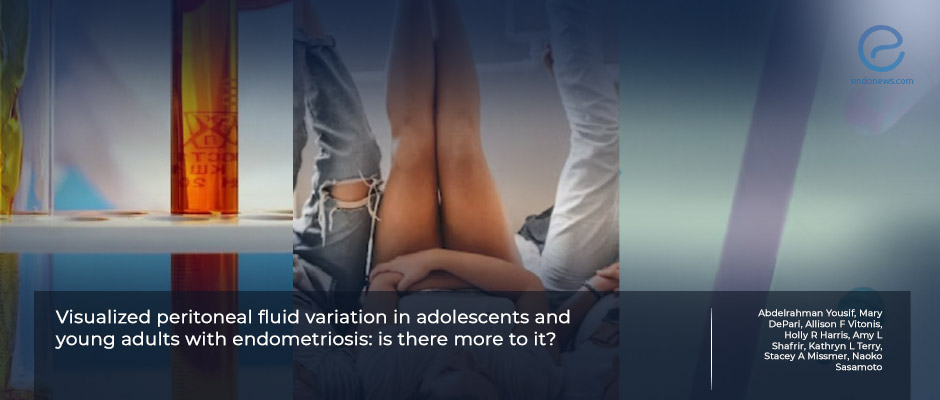Peritoneal fluid in young women with endometriosis
Jan 26, 2024
Some medications and stages of endometriosis may alter the peritoneal fluid characteristics.
Key Points
Importance:
- Peritoneal fluid was often used for biomarker studies, however, only a few studies are addressing its volume and gross characteristics, most with conflicting findings.
Highlights:.
- The gross characteristics of peritoneal fluid can be diverse according to the stage of endometriosis, medications, or menstrual cycle phase.
What's done here:
- This cross-sectional study from the USA examined the gross characteristics of peritoneal fluid and compared the patient's disease, demographic details, cycle phase, and pharmaceutical exposures.
- The research compared the characteristics of peritoneal fluid collected during the laparoscopy of 787 young women with surgically confirmed endometriosis with 762 young girls complaining of pelvic pain without endometriosis.
- All participants were asked to fill out a questionnaire form about their medical history, pain experience, and medication use initially and annually.
Key Results:
- Women under hormonal therapy at the time of laparoscopy had orange, pink, or red-colored peritoneal fluid, most likely due to birth control pills. The peritoneal fluid color was yellow with progesterone-alone medications.
- No color change was observed when painkillers, anti-depressants, or anti-anxiety medications were used.
- There was a variation in peritoneal fluid color across different cycle phases at surgery: it was red-colored during the menstrual cycle.
- Almost all the patients in the endometriosis group had stage I-II endometriosis.
- The fluid volume was less in the case of painkiller use, while it was extended among acyclic pelvic pain reporters. No volume changes were recorded in other characteristics of the study.
Lay Summary
Many blood substances are present in peritoneal fluid due to their derivation from the transudation of blood through the peritoneal surface. Ectopic endometriotic lesions can also change the medium to contribute to the definition of the local environment of the peritoneal cavity. There is miscellaneous research about peritoneal fluid biomarkers to understand the pathology of endometriosis in the literature. However, only a few are about the gross characteristics of the peritoneal fluid.
Yousif et al. from the Department of Obstetrics and Gynecology of Michigan State University, USA, set up a study to evaluate the peritoneal gross characteristics of patients with early-stage endometriosis and those with pelvic pain but not endometriosis. They statistically compared patient-specific characteristics, including demographics, symptoms, medicine intake, menstrual cycle phase, and endometriosis stage during laparoscopy, to the gross characteristics of the collected peritoneal fluid.
Overall, 1549 women underwent diagnostic laparoscopy due to chronic pelvic pain. The study group included 787 women with surgically and pathologically confirmed endometriosis. On the other hand, 762 women who had complaints of chronic pelvic pain but without endometriosis composed the control cohort. The whole population was young, and those with endometriosis all had early-stage endometriosis. The differences in peritoneal gross characteristics appeared when the patients were using exogen hormonal treatment or when they were in the menstrual phase during the operation. Unlike the literature, this study's data showed that the peritoneal fluid volume tended to decrease in patients who use painkillers. The increased peritoneal fluid was observed when the endometriotic lesions were identified in the posterior cul-de-sac, comparing the lesions out of the pouch.
"The volume and color changes of patients during the laparoscopy may help to understand the pathophysiology of endometriosis," concluded the authors.
This study which looks at the disease from a different perspective, was recently published in Frontiers in Reproductive Health.
Research Source: https://pubmed.ncbi.nlm.nih.gov/38162009/
adolescents peritoneal fluid oral contraceptives hormonal therapy analgesics menstrual cycle phase questionnaire superficial endometriosis

